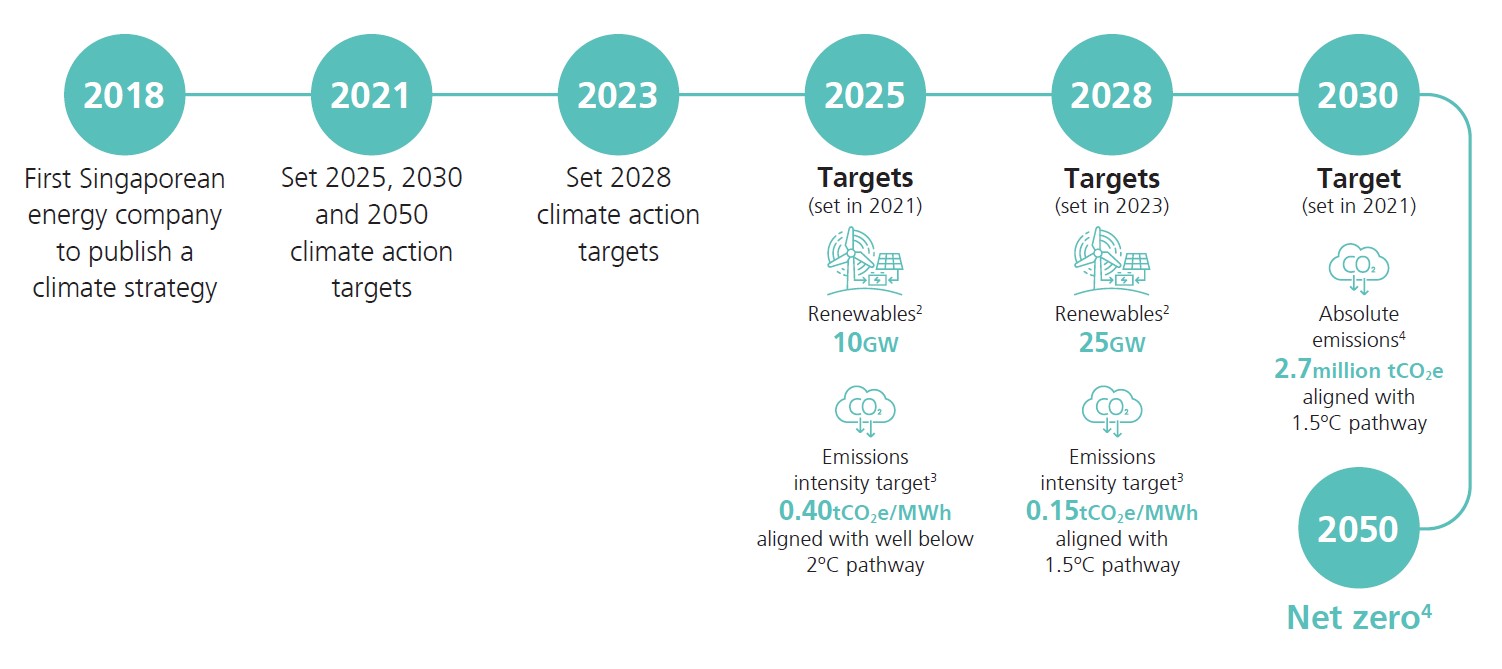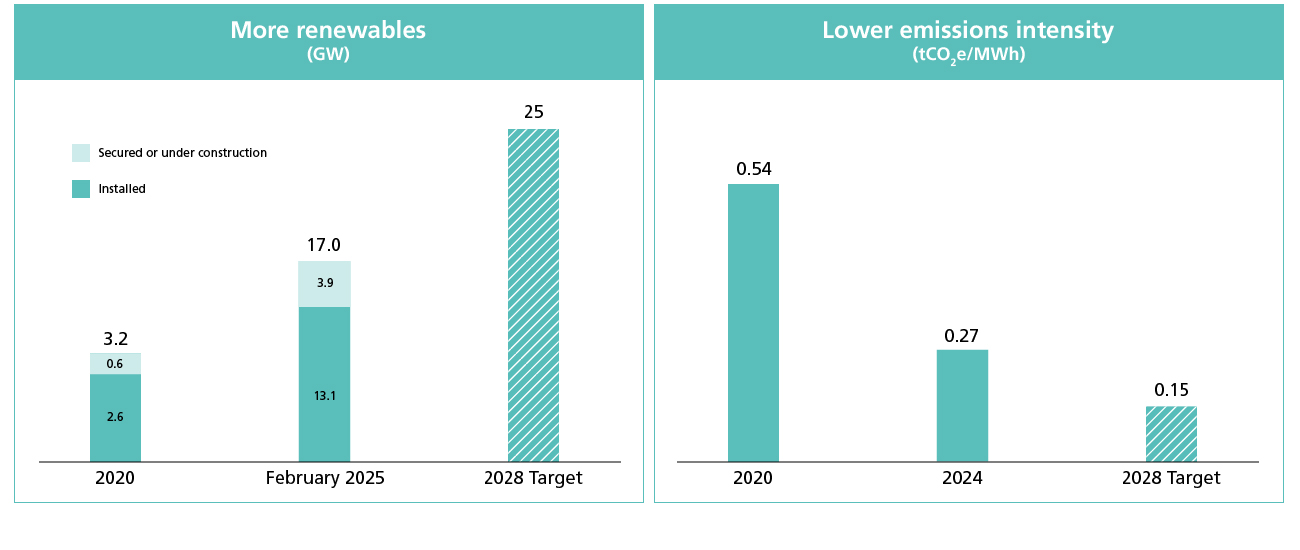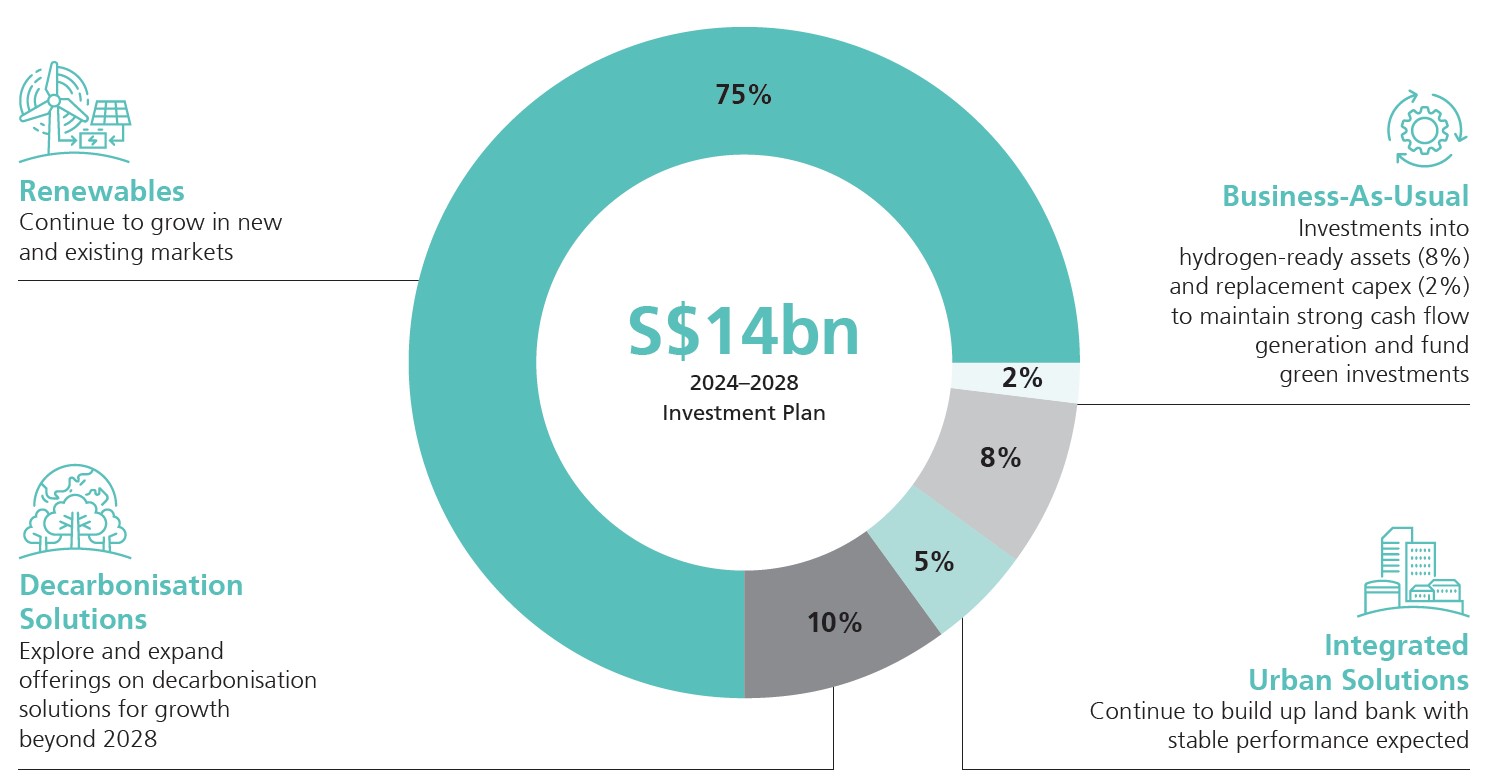Supporting Asia's clean energy future
The power sector contributes to 40% of global emissions1, making it a pivotal player in combatting climate change and enabling the global energy transition. At Sembcorp, we are committed to supporting Asia’s shift to a clean and responsible energy future for all.


Sembcorp launched its climate change strategy in 2018 and unveiled our inaugural strategic plan in 2021. Since then, we have made significant progress against our 2025 strategic targets, with current gross installed renewables capacity of 13.1GW as of February 2025. We have also achieved our 2025 emissions intensity reduction target in 2023. We remain committed to achieving our net zero emissions target (Scope 1 and 2) by 2050.
Building on this strong momentum, we have announced an enhanced set of targets during our Investor Day in November 2023.

Our targets
- By 2028, grow gross installed renewables capacity to 25GW
- By 2028, halve emissions intensity3 to 0.15tCO₂e/MWh from 2023 levels
- By 2030, reduce absolute emissions to 2.7 million tCO₂e
- By 2050, deliver net-zero emissions
Navigating the energy transition journey
The transition to a lower-carbon future requires transformative changes to energy sector players and systems, particularly in markets that are deeply entrenched in fossil fuel infrastructure and power purchase agreements. As the world works to scale down fossil fuel usage, access to reliable and affordable renewable energy as well as low-carbon feedstock must be expanded to meet the needs of industry.
Sembcorp is taking significant steps to position itself as a key player in the journey towards a low-carbon future. As a leading renewables player in Asia, we are expanding our renewable energy portfolio to support the transition towards a net-zero future. In addition, we are actively exploring and investing in energy storage and battery technology to support the continued growth of renewables deployments.
During this critical phase of transition, the role of gas remains indispensable in upholding the energy security required by businesses and communities every day. For regions with poor renewables resource endowment, gas-fired generation remains the most accessible for electricity, with a lower emission intensity as compared to coal or oil.
Sembcorp remains committed to supporting Asia’s shift to a clean and responsible energy future for all. We will continue to invest in the necessary capabilities in production and turbine-firing of hydrogen and its derivatives, in anticipation of its future commercial viability and technological maturity.
Capital allocation
In line with our strategic targets, a significant share of capital will be deployed to support our renewables growth. We will also deploy capital into decarbonisation solutions and investments into hydrogen-ready assets.

Climate-related disclosures
We report our performance, activities and initiatives on climate change and other material sustainability factors in our annual Sustainability Report. Our Climate-related Financial Disclosures are guided by the recommendations of the Task Force on Climate-related Financial Disclosures (TCFD).
1 World Energy Outlook 2024 report
2 Gross installed renewable energy capacity refers to current capacity of the plant at commercial operation date (in megawatt alternating current for wind and solar, and in megawatt-hour for energy storage) as specified in the grid connection agreement or as permitted (assumes 100% ownership of the facility). Figure excludes acquisitions pending completion and projects secured or under construction
3 GHG emissions intensity refers to the Group’s total GHG direct emissions (Scope 1) from its activities, indirect emissions (Scope 2) from its energy consumption and biogenic emissions from bioenergy feedstocks, divided by total energy generated and purchased, as calculated using an equity share approach for all operations in accordance with the GHG Protocol
4 2030 and 2050 targets cover the Group’s absolute Scope 1 and Scope 2 emissions

